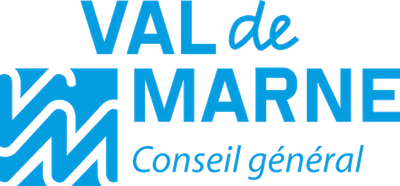PUBLICATIONS
Reference to this dataset can be made as follows - to the publication:
Marie-Ange Lèbre, Frédéric Le Mouël, Eric Ménard. "On the Importance of Real Data for Microscopic
Urban Vehicular Mobility Trace". In Proceedings of the 14th International Conference on ITS
Telecommunications (ITST'2015), Copenhagen, Denmark, December 2015.
or to the core data itself:
Marie-Ange Lèbre, Frédéric Le Mouël, Eric Ménard. "Microscopic vehicular mobility trace of Europarc
roundabout, Creteil, France", April, 2015.

@InProceedings{LebMA:OnIRDMUVMT,
author = {M.-A. L{\`e}bre and F. {Le Mou{\"e}l} and E. M{\'e}nard},
title = {On the Importance of Real Data for Microscopic Urban Vehicular Mobility Trace},
booktitle = {Proceedings of the 14th International Conference on ITS Telecommunications (ITST'2015)},
pages = {22--26},
month = Dec,
year = {2015},
doi = {10.1109/ITST.2015.7377394},
address = {Copenhagen, Denmark},
pdf = {http://www.le-mouel.net/Research/Publications/Conferences/2015/ITST2015.pdf},
}
@Misc{LebMA:MicroVMTERCF,
author = {M.-A. L{\`e}bre and F. {Le Mou{\"e}l} and E. M{\'e}nard},
title = {Microscopic vehicular mobility trace of Europarc roundabout, Creteil, France},
month = Apr,
year = {2015},
doi = {10.5281/zenodo.16870},
url = {http://vehicular-mobility-trace.github.io/},
note = {Open data trace, v1.0, Creative Commons Attribution-NonCommercial 4.0 International License}
}
Related Articles
M.-A. Lèbre, F. Le Mouël, and E. Ménard. "Resilient, Decentralized V2V Online Stop-free Strategy in a
Complex Roundabout". In Proceedings of the IEEE 83rd Vehicular Technology Conference
(VTC'2016-Spring), Nanjing, China, May 2016.
@InProceedings{LebMA:ResDV2VOSFSCR,
author = {M.-A. L{\`e}bre and F. {Le Mou{\"e}l} and E. M{\'e}nard},
title = {Resilient, Decentralized V2V Online Stop-free Strategy in a Complex Roundabout},
booktitle = {Proceedings of the IEEE 83rd Vehicular Technology Conference (VTC'2016-Spring)},
month = May,
year = {2016},
address = {Nanjing, China},
pdf = {http://www.le-mouel.net/Research/Publications/Conferences/2016/VTCSpring2016.pdf}
}
M.-A. Lèbre, F. Le Mouël, and E. Ménard, A. Garnault, B. Bradaï, and V. Picron. "Real scenario and
simulations on GLOSA traffic light system for reduced CO2 emissions, waiting time and travel time".
In Proceedings of the 22th Intelligent Transport Systems and Services World Congress (ITS World
Congress'2015), Bordeaux, France, October 2015.
@InProceedings{LebMA:ReaSSGLOSATLSRCO2EWTTT,
author = {M.-A. L{\`e}bre and F. {Le Mou{\"e}l} and E. M{\'e}nard and A. Garnault and B. Brada{\"\i} and V. Picron},
title = {Real scenario and simulations on {GLOSA} traffic light system for reduced {CO2} emissions, waiting time and travel time},
booktitle = {Proceedings of the 22th Intelligent Transport Systems and Services World Congress (ITS World Congress'2015)},
month = Oct,
year = {2015},
address = {Bordeaux, France},
pdf = {http://www.le-mouel.net/Research/Publications/Conferences/2015/ITSWorldCongress-final-paper-2736-GLOSA-2015.pdf},
}
M.-A. Lèbre, F. Le Mouël, and E. Ménard. "Partial and Local Knowledge for Global Efficiency of Urban
Vehicular Traffic". In Proceedings of the IEEE 82nd Vehicular Technology Conference (VTC'2015-Fall),
Boston, USA, September 2015.
@InProceedings{LebMA:ParLKGEUVT,
author = {M.-A. L{\`e}bre and F. {Le Mou{\"e}l} and E. M{\'e}nard},
title = {Partial and Local Knowledge for Global Efficiency of Urban Vehicular Traffic},
booktitle = {Proceedings of the IEEE 82nd Vehicular Technology Conference (VTC'2015-Fall)},
pages = {1--5},
month = Sep,
year = {2015},
address = {Boston, MA, USA},
doi = {10.1109/VTCFall.2015.7391065},
pdf = {http://www.le-mouel.net/Research/Publications/Conferences/2015/VTCFall2015.pdf}
}





